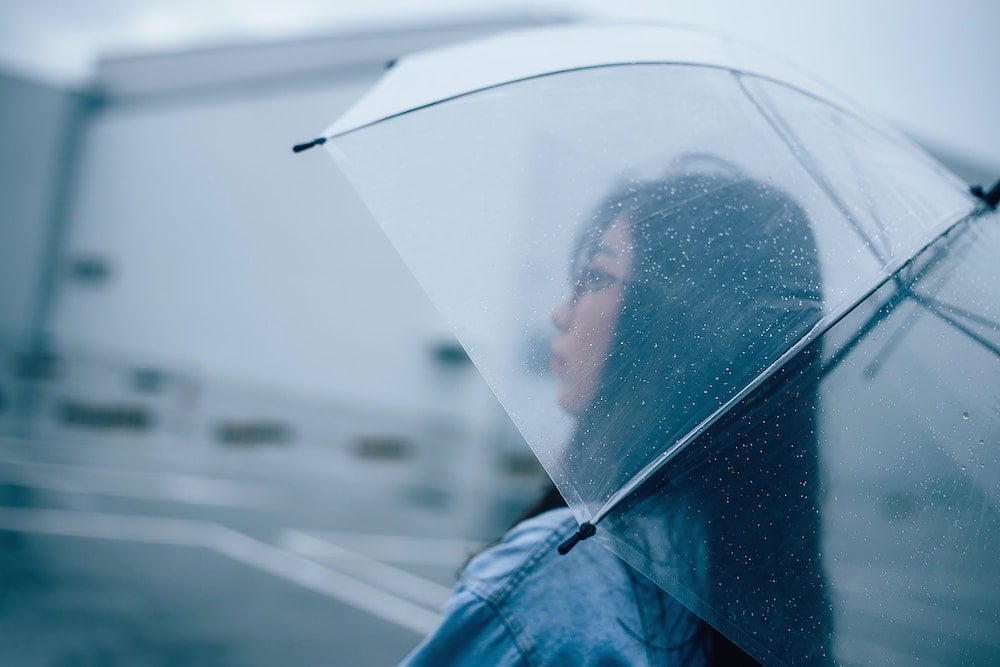
It’s that time of year again. The rain has started to fall, dark clouds loom, and daylight savings is upon us. Maybe you’re one of those Pacific Northwest vampires who enjoy the darkness and cold of Fall and Winter, or maybe you’re a bit like the rest of us who start to drag, feel low, or downright depressed this time of year. If you are shuddering at the thought of darker days ahead, you might be experiencing Seasonal Affective Disorder (appropriately acronymed SAD), a depressive disorder related to changes in seasons.
Most commonly we see SAD during winter months, but some might notice mood changes in spring and summer as well. You might be more susceptible to SAD if you:
- Live at a higher latitudes, like the Pacific Northwest (resulting in less light in winter seasons)
- Are female
- Are younger
- Have a diagnosis of a mood disorder such as bipolar I or II, or Major Depression.
The lack of sunshine may disrupt biological processes in the body, such as interfering with your circadian rhythm, reducing serotonin levels (a necessary neurotransmitter for positive mood), and melatonin production (the hormone responsible for regulating sleep patterns and mood.). Here’s some information on signs and symptoms that you may be experiencing SAD, and what to do about it.
Signs and symptoms of SAD may include:
- Feeling depressed most of the day, nearly every day
- Losing interest in activities you once enjoyed
- Having low energy
- Having problems with sleeping
- Experiencing changes in your appetite or weight
- Feeling sluggish or agitated
- Having difficulty concentrating
- Feeling hopeless, worthless or guilty
- Having frequent thoughts of death or suicide
It goes without saying that if you notice any of these signs and symptoms increasing, particularly thoughts of suicide or self harming, please contact your doctor or mental health provider to get adequate care.
SAD has shown to decrease with light therapy, medications, and mental health counseling. Here are some practical things do start with:
- Get a full spectrum sun lamp with at least 10,000 LUX, like this one, and turn it on for at least 20-60 minutes in the morning while you get ready for the day. Full spectrum sun lamps are shown to improve mood and alertness, and I have found mine incredibly effective.
- Don’t forget the vitamin D. Since we don’t get adequate vitamin absorption when the sun disappears for a season, it is important to supplement it in the winter months. There has been some evidence that SAD can be improved with daily intake of 10,000 I.U. of vitamin D. Always check with your doctor before beginning any supplement regime.
- Get regular movement during your day. Exercise of any kind reduces stress and improves mood, and is key for warding off SAD symptoms. This doesn’t mean running a marathon (but go for it if that’s what you like), but rather any fun or enjoyable movement that works for you for at least 20 minutes a day. Walk, dance, do yoga, hit a punching bag, do some kart-wheels!
- Make your environment lighter and brighter. Open the shades, increase bulb wattage in your lamps, paint a room light color, maybe even trim some branches off the tree that’s blocking light through the window. However you do it, a brighter space can lift your mood.
- Get involved with a club or social group, or just make sure you aren’t isolating in your cave! We know that social interaction is key in lifting our moods and helping us feel connected with others. Even if you dread that night out with friends, do it anyway, and notice how you felt before (dread) versus after (maybe tired, but feeling better).
- Create a schedule or something to look forward to daily or weekly. Having small goals to check off a list, or a reward for yourself after completing a task can all help keep you motivated. This might be like a coffee after doing a chore, or getting take-out at the end of the week if you finish the to-do list.
- Consider an anti-depressant medication. If all else is failing, you can’t move to Arizona, and you feel hopeless, don’t hesitate to talk to your doctor about the use of an antidepressant. We have more than enough evidence that medication can truly help, and there is no shame in taking mood-enhancing medication to get through dark months. If stigma gets you down, discuss that with your doctor or counselor. I like to remind my clients that if they had diabetes, they’d take insulin to help process blood sugar. We don’t ask diabetics to will their bodies to produce insulin, and we don’t shame them because they can’t. It really isn’t that different with an antidepressant. If our serotonin is low, especially if you’ve experienced depressed or anxious moods before, it may not be worth the agony of trying to force yourself out of bed or shaming yourself out of a mood.
I love a good dose of satire to ease the dread of winter, and this Portlandia “winter” clip usually does the trick. Enjoy!
